
Imagine a ride so frightening, guests would need to sign a waiver of liability to enter the queue; so terrifyingly intense, no one under 16 or over 55 would be allowed aboard for “physical health and safety”; so dizzyingly, maddeningly extreme, guests would be limited to ride no more than once per day for their own “emotional health”; so cutting-edge, it would feature a mysterious world’s-first element that no other roller coaster on Earth had ever even attempted.
Would you be in line to tackle the world’s first “psychoaster?” If so, that would obviously make you a born-and-bred thrillseeker looking to see just how far a modern roller coaster can go. ...So how might you feel if your multi-hour wait leads to a ride about as extreme as Big Thunder Mountain?
Image: Alton Towers
That was the shocking reality faced by guests who showed up in droves to tackle TH13TEEN, the psychological thrill ride that opened at England’s Alton Towers in 2010. The would-be record-breaker promised (and delivered) a world’s first… but as part of one of the most infamously flopped marketing campaigns in the history of the industry. Today, we’ll dig into the clever creation of Thirteen, go for a virtual ride aboard the coaster, and learn from the past to see how a botched publicity stunts forever stunted this coaster’s growth.
But as any reader of our Declassified Disasters series knows, any ride's story – good or bad – begins before the ride is even dreamed of...
(Please note, this feature will also reveal "spoiler" elements for two other attractions, Verbolten at Busch Gardens Williamsburg and Hagrid's Magical Creatures Motorbike Adventure at Universal's Islands of Adventure. Read at your own risk!)
Towers through time
Alton Towers is a theme park as only the United Kingdom could offer.
Located in Staffordshire, England about two hours north of London, the park is steeped in tradition… even if it’s technically about as old as Epcot. That’s because Alton Towers is built around the real, true remains of the eponymous Towers – the stately manor home of the 15th Earl of Shrewsbury, completed in 1814 (less than forty years after the United States was born). When the Earl’s family sold the manor a century later, the home fell into disrepair. It was boarded up, its fixtures sold, and left as an empty shell.
Image: Alton Towers
However, through the 1960s and ‘70s, the home – and the surrounding gardens – were opened intentionally as an attraction with a boating lake, chairlift, and 2-foot gauge miniature railway. But the park’s formal introduction as a theme park proper was in 1980 when it opened Corkscrew, a double-corkscrew steel roller coaster costing £1.25 million.
That was just the start. Take a look at the park map below, from 1982. Corkscrew was an oddity – a strange, steel roller coaster set down in the otherwise elegant gardens and greens of a growing tourist attraction...
1982 park map. Can you locate Corkscrew in the otherwise elegant young park? Image: Alton Towers, via TowerTimes.
... But before long, coasters would become the norm and not the exception. Alton Towers was purchased in 1990 by the Tussauds Group (today, Merlin Entertainments) – best known as the present owners of Madame Tussauds wax museums, Sea Life aquariums, LEGOLAND parks, the “Eye” Ferris wheels, the “Dungeons” attractions, and fellow U.K. theme parks Chessington World of Adventures and Thorpe Park.
Infused with the new finances and marketing power of Tussauds, Alton Towers went into overdrive in the 1990s, becoming a very unique, world-class theme park – a living example of the complementary balance of “thrill” and “theme” that fans of Cedar Fair, Six Flags, and SeaWorld Parks wish desperately that their parks could get right… To see what we mean, let’s take a look.
Secret weapons
In 1994, Alton Towers found its place on the map.
That year, the park debuted a new themed area called the Forbidden Valley, themed to a desolate, post-apocalyptic world of standing stones and the rusted, archaic remains of human civilization. Remnants of human war are scattered about, but all seem to be half-consumed by strange, fleshy, red tendrils reaching through the ground... Though oxidized, gnarled, thrilling flat rides dotted the landscape, the anchor of this treacherous valley was a ride originally known only by the codename "Secret Weapon": Nemesis.
Image: Alton Towers
Considered one of the best inverted roller coasters on Earth, Nemesis sends guests twisting and flipping through the air. But that’s not all. They say necessity is the mother of invention. That's never been more true than for the coaster designers adding to Alton Towers...
Due to a uniquely restrictive height requirement (wherein Alton Towers’ coasters can rarely break the treeline), Nemesis was constructed in trenches and valleys, tearing over blood-red rivers and twisting through the horrific, interdimensional, insectoid exoskeleton of an ancient alien whose body serves as its loading station – and the origin of those tendrils consuming the land. Now, the ride's terrain-hugging, subterranean layout is regarded as one of the world's best.
Image: MasterEditor99, Wikimedia Commons (license)
In 1998, the park’s next “Secret Weapon” debuted in another reimagined land. In X-Sector – themed to a mysterious and sinister government facility testing the limits of humanity – opened Oblivion, the first of coaster manufacturer B&M’s now-famous Dive Machines. Seated eight-across, riders were perched over the edge of a vertical drop before plummeting into a smoke-filled black hole in the ground.
Image: Joel A. Rogers, CoasterGallery.com (Used with permission)
Then came the next “Secret Weapon,” Air. B&M’s first-ever flying coaster, this graceful ride was constructed in a new futuristic, green, oasis-like sub-land within the Forbidden Valley, as if nature were reclaiming the vast desolation of the land's post-apocolypse setting. Twisting and diving through the landscape, Air set the intense yet poetic tone for other flying coasters, like SeaWorld’s Manta. And like all coasters at Alton Towers, it laid low, diving and twisting through the treeline.
2002 map. Click and expand for a much larger and more detailed view. Image: Alton Towers via towersnerd
That's what we mean when we say that in just two decades, Alton Towers had gone from a leisure gardens with a single roller coaster into a park resembling the one we know today... Notably, it was on its way to a balance that parks today seem to find so difficult to strike. Maybe a park can feature spectacular, thrilling coasters, but not at the expense of scenery, special effects, thoughtfully themed areas, and – yes – even story! Alton Towers struck the balance of atmosphere and adrenaline, all centered around that centuries-old manor... Truly one-of-a-kind. And that's important for what comes next...
Dinosaurs, dragsters, and... demons?
Image: Alton Towers
And as for the coaster that started it all – Corkscrew? Though Corkscrew hadn't changed much, the world around it had – literally. In the late '90s, the space around Corkscrew was re-themed as Ug Land. This area offered carnival rides like the yo-yo swings and scrambler, dressed in prehistoric styles befitting The Flintstones. Naturally, that meant that to fit in, Corkscrew would be accentuated with dinosaur bones, a ribcage tunnel, and T. rex skulls among its decorations.
But that's not all. In 2005, Corkscrew was joined by a headlining neighbor, Rita - Queen of Speed. Coming just a year after the opening of the world-famous Top Thrill Dragster, Rita operated off the same mechanics and theme (even if it was an eighth the size of the 420-foot tall landmark).
Image: Google
Stepping through a giant rubber tire entrance arch, guests were seated in flame-painted “dragster” style race cars, rumbling beneath a drag race countdown light alongside a modern, corrugated steel Race Control building. Okay, so Rita didn’t make much sense in Ug Land (unless you count that the race track’s name was Thunder Rock Rally). No one said Alton Towers was Disney…
Image: ThemeParkMedia, Flickr
But in 2008, the park announced that Corkscrew’s time was short. The ride that started Alton Towers on its modern theme park path would be closed on November 9, 2008 after 28 years. (Its double-corkscrew was salvaged and relocated to the front of the park, where they act as a centerpiece of the park's entrance plaza.)
Though Ug Land outlived Corkscrew, it wasn’t long for the world, either… The prehistoric carnival with a dragster-themed launch coaster was about to be reimagined from scratch. "Secret Weapon 6" was officially on the way, with a “world’s first” element no one had ever seen before. In October 2009, posters on the construction wall around Corkscrew's empty plot gave just one hint toward the ride that would take Corkscrew's place in spring 2010:
Image: Alton Towers
"Ride the Demon of the Dark Forest."
And that's where the problems begin... Read on...
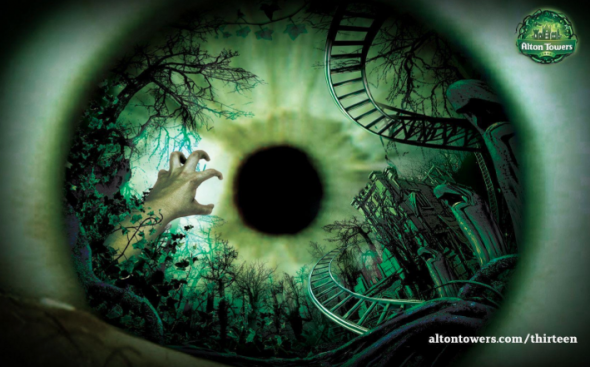
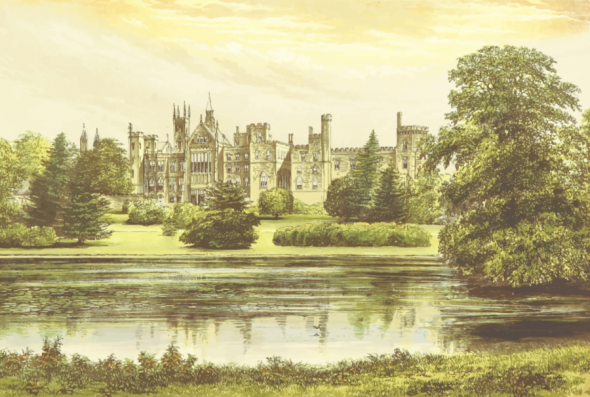
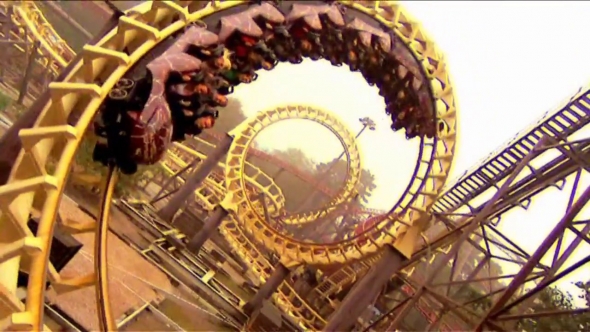
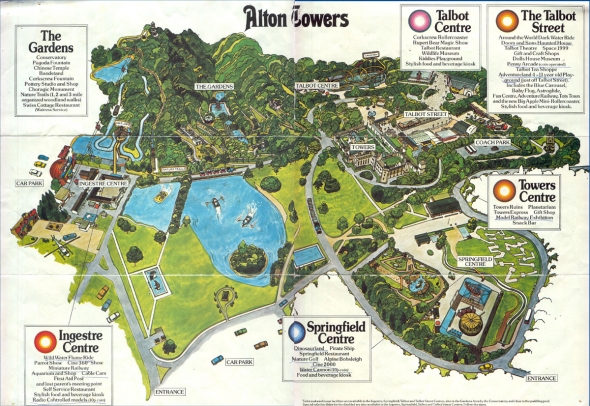
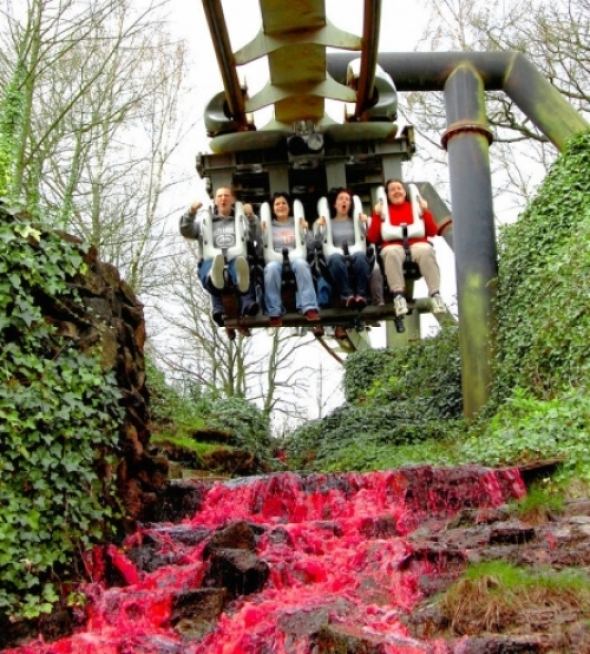
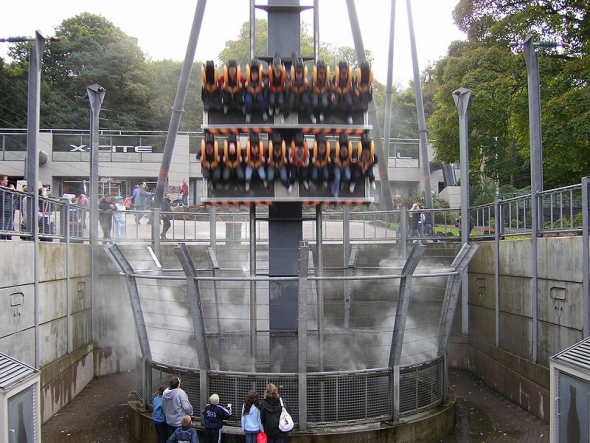
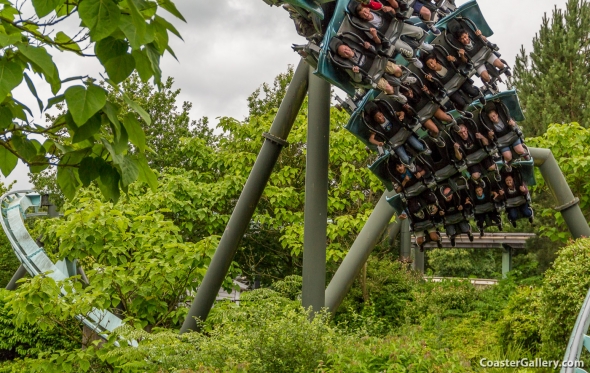
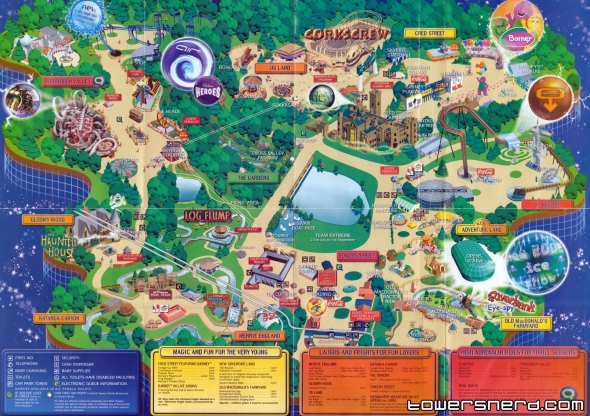
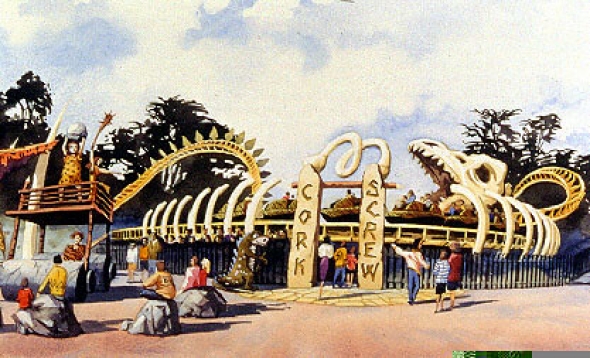
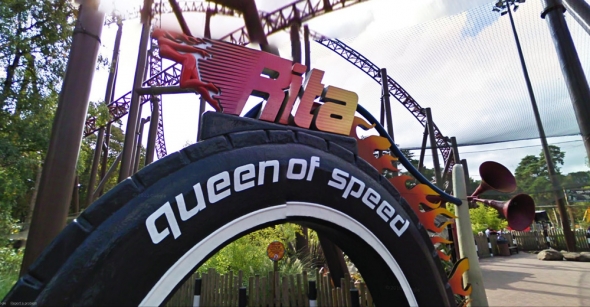
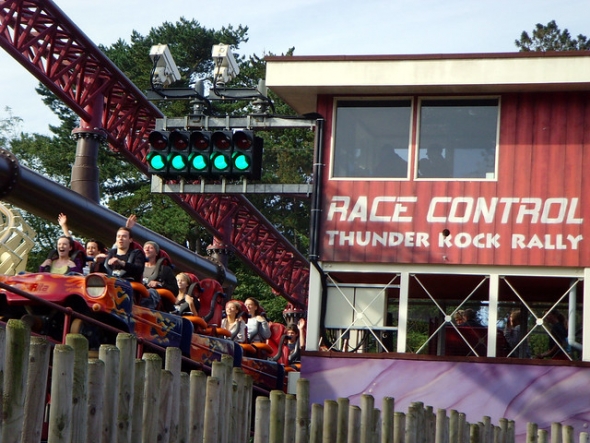
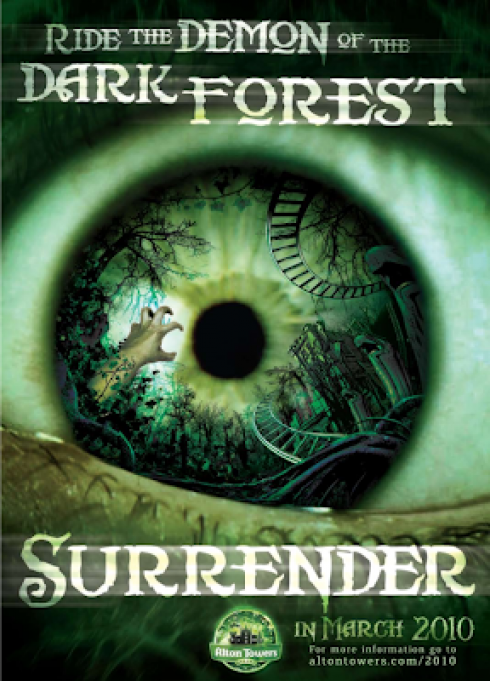

Add new comment